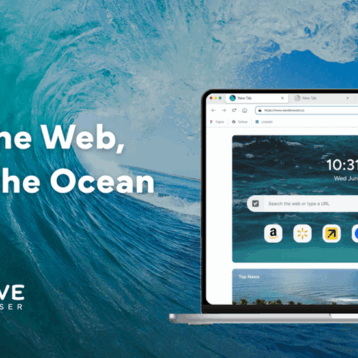
Today, e-commerce is marked by fierce global competition. Businesses constantly seek new ways of optimizing their advertising campaigns. Ads cost a lot of resources and drive up sales significantly. So, how do companies ensure the best return on investment (ROI) possible? One of the ways is using data, which provides valuable insights into which ads are performing well, understand audience preferences, and adjust strategies to achieve better ROI. Collecting vast quantities of data can be a daunting task, especially if done by people. It is a time-consuming and man-hour-intensive task. That is why, in the modern age, data is often collected by web scrapers. However, websites are armed against these tools as they drive up traffic. To overcome this problem, scrapers use anonymous web connections, provided by static residential proxies. This article aims to explore how businesses optimize ad campaigns with data-driven insights, as well as how static residential proxy servers are used to facilitate large-scale data collection.
Data-Driven Advertising
Data-driven advertising involves using advanced analytics tools to pinpoint the most effective elements of your advertising expenditure. By leveraging these insights, marketers can allocate their resources more efficiently, ensuring that every dollar spent on advertising delivers the highest possible returns.
The Role Of Web Scraping
Web scraping involves extracting publicly available data from websites. However, websites monitor visitors and their activities. If there are too many requests sent from the same IP address, websites are designed to give CAPTCHAS, block, ban, or suspend that address. Static residential proxies bypass this issue by assigning an ISP (Internet Service Provider) issued IP address, which has a genuine home address.
Think of proxies as intermediaries between the user and the internet. Instead of you requesting the website directly, you make it to the proxy, and it then relays it to the website. This is the generic way all proxies work. Static residential proxies stand out for their genuine appearance. These are the best choices for anyone who wants to appear like a real user.
Optimizing AD Campaigns with Web Scrapers
Proxy connections enabled companies to collect vast data, which can then be used to determine the most relevant metrics for your ad campaign. This could include things like click-through rates (CTR), conversion rates, engagement metrics, cost per click (CPC), and return on ad spend (ROA). For example, if your goal is brand awareness, focus on metrics like impression and reach. If it’s conversions, tracking metrics like conversion rates and cost per acquisition (CPA) should be the focus.
Web scraping is also used to gather competitor data from platforms like Google, Facebook, or Instagram. Analyzing their ad copy, visuals, and targeting strategies to debut successful patterns. For instance, if a competitor’s ad copy frequently uses specific keywords and has a high engagement, it might be worth considering incorporating similar keywords into your ads.
Another great data source is industry-specific websites, blogs, forums, and social media platforms. Data gathered from these sources can be used to determine current trends and customer preferences. For example, if you’re in the fashion industry, scraping data from fashion blogs and Instagram influencers to see which styles and brands are trending. This information can help align your ads with what’s currently popular and relevant.
Companies can also scrape their ads to track performance in real-time. This includes scraping data for impressions, clicks, CTR (click-through rates), and conversions from ad platforms. For example, if an ad has declining CTR, it might be time to refresh the AD creative or copy. There are also automated tools that can help in pulling this data regularly.
As discussed, companies have many different sources of data available. The information gathered can then be used to adjust marketing strategies, ensuring the highest possible return on investment. Tweaking ad copy, changing targeting parameters, or reallocating budget to high-performing ads are how companies do that. For instance, if the ads targeted towards a specific demographic have a higher conversion rate, it’s beneficial to increase the budget for that demographic. Similarly, if some keywords perform better, adjust your SEO and ad targeting to focus on those keywords.
Leveraging Data Analytics Tools
Data analytic tools process vast amounts of data to provide actionable insights. They help in identifying patterns and trends that may not be immediately obvious. For instance, machine learning algorithms can use the collected data to predict customer behavior and preferences, allowing businesses to tailor their ads more effectively.
These tools can also be analyzed in real-time, which allows businesses to monitor their ad campaigns continuously. If an ad is underperforming, immediate adjustments can be made to improve its effectiveness. This level of responsiveness is essential in the fast-paced world of e-commerce.
Advanced analytic tools can integrate data from multiple sources, providing a comprehensive view of the market landscape. This integration helps businesses understand how different factors, such as seasonal trends or economic changes, impact their ad performance. By having a holistic view of the market, businesses can make more informed decisions and optimize their ad campaigns more effectively.
Summary
In conclusion, optimizing ad campaigns in e-commerce requires a data-driven approach. Web scraping, facilitated by static residential proxies, enables businesses to collect large amounts of data efficiently. This data provides invaluable insights that help adjust marketing strategies to achieve maximum ROI. Advanced data analytics tools and the future integration of AI and machine learning will further enhance the capabilities of data-driven advertising, making it more efficient and accurate.










